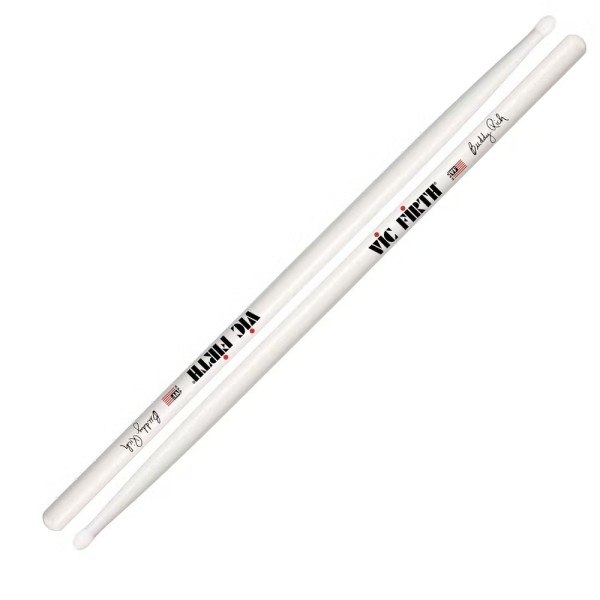





With over 400 different models of drumstick available, Vic Firth provides an extensive selection that caters to every kind of drummer – no matter their age, style and experience.
There are several factors to consider when selecting a pair of sticks: Stick size, diameter and length, tip type, material, taper, balance point and the finish. It’s very much down to personal preference and experimentation when it comes to finding the right sticks for you. Each affects the stick in different ways, making certain pairs and designs better for various purposes.
The biggest factor that impacts a drumsticks feel is its size. Excluding kids/marching sticks - and just sticking to traditional ones - most will be around 16 to 17 inches long and 0.5 thick. There are lots of variations and the biggest or smallest sticks tend to be signature models. The most common stick and the place most people start is a 5A. But what does that mean?
Most drumsticks will be categorised by a number and a letter. The number indicates the weight and circumference/thickness, while the letter dictates the size/length of the stick, as well as its recommended application.
The thickness of the stick will affect the grip in your hand as well as the balance. As well as the feel, the sound the stick produces will also change. Thicker sticks will be louder and more powerful (but will take more effort to move and play). The last factor to consider with thickness is the durability. A thicker stick will take a beating and generally lasts a bit longer. The length of a stick will affect the balance in your hand as well as your overall reach when sat at your kit. A longer stick will give you more leverage, but a shorter stick might give you better speed.
These are some of the most common sizes available:
The material of the tips on your drumsticks will alter your sound. The two most common types are wood and nylon.
The design and shape of the tip is also important. It has a big effect on the sound especially when striking cymbals. This is because different tip shape impacts the amount of contact between the stick itself and your cymbals. For example, your ride tone can be completely changed by using sticks with different tips.
The taper (which describes the distance between the neck and shoulder of a stick) alters playability too. A longer taper will feel faster and lighter, with an improved level of rebound; a shorter taper generally provides you with a front-loaded feel.
The most common stick material is hickory. This is because of its amount of flex and impressive absorption quality. Maple is the second most common stick material and is very light, delivering a contrasting playing feel. However, it’s very brittle and snaps a lot more easily. The last of the most common materials is oak. This is a very strong wood because of its sheer density and usually lasts the longest. A slight downside is that it can feel very bouncy and transfers the vibration of playing into the drummer’s hand more. Other popular stick materials are birch, carbon fibre and even metal.
The finish also affects the feel of the stick. Vic Firth probably have the most variations of stick finish on the market. A normal stick is lacquered and helps with durability and sweat reduction. You can also get natural sticks, gritted sticks and double glazed/lacquered sticks - which are shiny. Vic Firth even offer an option of rubberized sticks that provide extra grip.
The signature sticks are all designed by Vic Firth in collaboration with the artist and can offer some very different options when compared to the normal range. All signature models are based off a normal stick but with altered characteristics. That could be a different coloured lacquer, bigger tips, longer taper or a thicker base. The most extreme version of these would be the super short Jojo Mayer sticks (which are super quick and great for drum n bass. On the other hand, the monster sticks of Thomas Lang are built for durability due to his powerful playing, and even features a coloured lacquer to show off his stick tricks